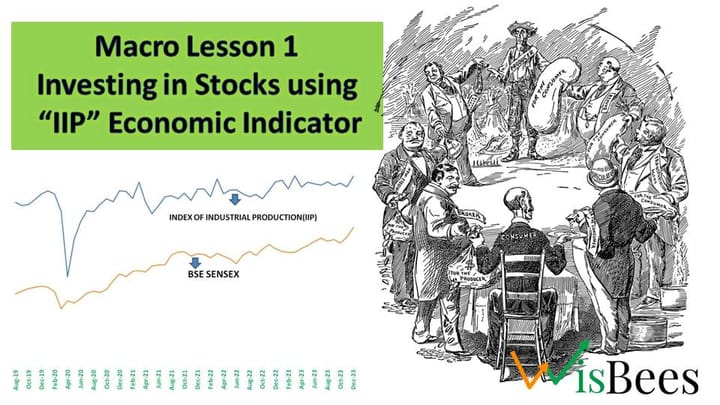"Emergency Funds: Do You Have One, Why You Need It, and Where to Park It?"

More than 3 years from now, on one Sunday morning I was browsing through the World section in the newspaper, and a strange news caught my attention. A virus of unknown origin causing acute respiratory problems in hundreds of people in China. The same news article continued to appear every subsequent day only with an escalation in the number of affected people. In no time the virus made it to the front page of every newspaper and to every nukads and gullies (Lanes & Streets) of the World.
Yes!! It was the COVID-19 pandemic, which at first caused respiratory issues, then claimed a plentiful innocent lives, eventually entered into the economy, crushing the finances of almost everyone.
During the lockdown, the days were full of chaos. The risk of getting infected, difficulty in acquiring essentials, constant fear of losing a job & the empty roads with zero economic activities used to send shivers down the spine.
The complete shutdown of the country's economy caused a bunch of individuals with no job, no money & sometimes not even a single grain of food. To counter such unprecedented streaks of events, many had to dissolve their assets like Inherited land, Gold ornaments, Provident fund & what not. Yet it was not enough for the treatments & daily expenditure forcing many to incur a large amount of credit card debt.
Now that we are almost out of its clutch, we should retrospect our past actions which caused this massive breakdown in Personal finance.
These financial emergencies are not new to us, they have been around since time immemorial. Name it the 2008 financial crisis, the recurring cycle of inflation & recession, any natural disaster, the untimely death of a loved one & so on. As a matter of harsh truth these events will surely prevail in the future with different names & roles.
Although there is no magic solution to dodge these bizarre events, we can simply shield our personal finances from catastrophic failure with a specialized dedicated fund called the Emergency Fund.
Careful Curation of Emergency fund
- Emergency fund aka contingency fund is the corpus one needs to save for the rainy day. This is a crucial step in financial planning which provides a safety net to personal finance in tough times.
- One should start putting money into the emergency fund early in one's career to sustain the unprecedented financial issues.
- Every financial institution and almost every googled personal finance expert advises to have 3 to 6 times the value of monthly expenditure in an emergency fund. Generally, the monthly expenditure includes house rent, utility bills, loan instalments & daily necessities.
- This fund should be highly liquid, meaning one can easily get their hands on the money.
- In addition to that, It's sensible to keep this fund invested. For which a low-risk and high liquidity scheme of investment should be opted.
The fund should only be utilised for financial emergencies. e.g., Buying your dream car, annual vacation does not come under emergency.
Hassle-free Creation of Emergency Fund
There are several methods of creating one emergency fund considering the financial aspect & risk appetite of an individual.However, two methods for people in their early careers has been mentioned here. But remember, it is not advisable to prioritise high returns with your emergency fund. This approach may lead to regrettable consequences.
It's important to choose instruments that offer high liquidity, as you never know when an emergency may arise. For this reason, it's not advisable to park your emergency fund in stocks, as they are subject to market volatility.
Liquid Mutual Funds
Liquid mutual funds invest in debt and money market instruments with a maturity period of up to 91 days, which makes them less volatile compared to equity funds. These mutual funds are highly liquid, which means you can easily withdraw your funds anytime without any lock-in period. This makes them an ideal option for an emergency fund, as you can access your funds quickly in case of any unexpected expenses or financial emergencies.
Some examples of liquid mutual funds in India are:
All of these fund invests in high-quality debt securities and money market instruments, offering low volatility and high liquidity. It aims to provide stable returns with a maturity period of up to 91 days.
With minimal risk, you can start investing from as low as 100 Rs. These funds have all generated similar returns, averaging above 5.3% CAGR over a five-year period, as they are invested in the same types of instruments.
Laddering FD Technique
Years back, I came across an effortless technique called the Laddering FD for creating the emergency fund. This technique involves investment in a series of RDs(Recurring Deposits) & FDs(Fixed Deposits) to build an easily accessible and risk-free fund.
(Caution: It's not a mandatory recommendation to adhere to the shared methodology.)
The steps of this method have been enlisted below.
- Invest one tenth of monthly salary in a RD (Tenure 1 year) every year.
- Reinvest the matured RD in Fixed Deposit each subsequent year. (Tenure, Let's say 3 years)
- Keep investing in this same manner of subsequent RD & FD.In the year when the first FD matures, club the amount with that year’s matured RD amount & invest in a new FD.
- From that year onwards, you will have one matured FD & RD. Continue clubbing these and keep on investing in the FD ladder.
(The monthly amount & tenure of investment is purely your choice.)
The math behind the fund
Don't panic about complicated calculations, as there is a simple enough formula for calculating the fund amount
Let's consider
RD monthly= R / Interest rate RD
= i / Interest rate FD
= f / Years of Investment=n
Let R be the monthly contribution to your emergency fund.
Let i be the interest rate for your recurring deposit (RD).
Let f be the interest rate for your fixed deposit (FD).
Let n be the number of years of investment.
Amount in your Emergency fund after n years

The investment amount should be decided according to your personal finance. The sooner one starts to contribute, the bigger the Emergency Fund becomes. That's the magic of compound interest. Feels like Parents are always right that “Time is Money!!”.
Don't get puzzled between Emergency Funds & Wealth generation
The above-explained financial instrument may seem like an illustrative wealth generation scheme, but this is a low-risk fund management idea with quite good liquidity for the goal of an emergency fund. For a generation of wealth, higher risk & lesser liquid schemes, like Equity Mutual Funds, Hybrid funds, can be opted. By the way, that is an entirely separate aspect of personal finance to be carefully studied & applied.
Once you have an emergency fund, it’s prudent to use it only for emergency purposes rather than dissolving the whole fund to satisfy your unnecessary luxurious wants/desires.
PS: One's biggest nemesis is equivalent to not having Disciplined Personal Finance.
| Broker | Type | Offerings | Invest |
|---|---|---|---|
 |
Discount Broker | Mutual Funds, Stocks, IPOs, Bonds | Know more |
 |
Discount Broker | Mutual Funds, Stocks, IPOs, Bonds | Know more |
 |
Discount Broker | Mutual Funds, Stocks, IPOs, Bonds | Know more |
 |
Service Broker | Mutual Funds, Stocks, IPOs, Bonds | Know more |



